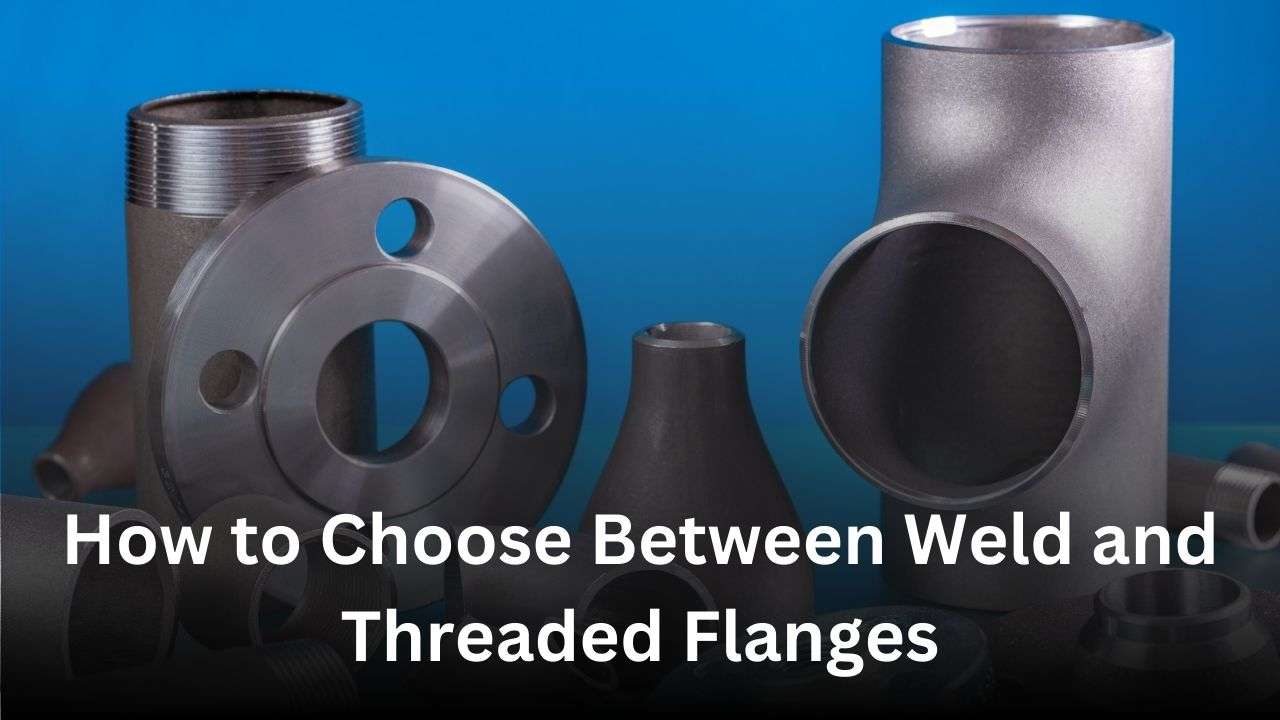


Finishing piping systems without flanges connecting the various components, such as pumps, valves, and pipes, is impossible. Secure attachments and flanges make maintenance activities easier and prevent leaks. Weld flanges and threaded flanges are the two types of flanges considered to be the standard alternatives.
The choice depends on which flange best suits your project requirements. This blog examines the distinct features of weld and threaded flanges, their benefits and drawbacks, and their appropriate applications.
Weld flanges are named after their method of attachment through pipe welding. The permanent connection formed by this flange type provides both high-pressure resistance and extreme temperature tolerance. The oil and gas, chemical processing, and power generation sectors use these flanges regularly.
Welding Ensures Strong and Secure Connection – Welding guarantees a tight bond that will not allow leakages.
High Pressure and Temperature – It is suitable for harsh working environments.
Durable and long-lasting—The welded connection is longer than the others, making it a perfect option for permanently installing the load.
Low Maintenance – The weld flanges need not be serviced much except if they get rusty after some time.
High Installation or Setup Cost It involves many installation processes, which require much time and subsequent costs.
Hard to Modify or Remove – Since the flange is welded, they are hard to modify or remove.
Cost Upfront High – This method is costlier upfront due to welding equipment and labor.
Threaded flanges incorporate internal threads, which enable them to fasten onto pipes through screwing rather than welding. Threaded flanges find their applications in low-pressure applications and situations excluding welding methods.
You can install and uninstall threaded flanges without welding because no welding is needed.
Threaded flanges save money because they need basic installation without welding or expert workers.
Threaded flanges work best when temporary system changes happen often.
These flanges can operate safely in explosive zones because welding is not needed.
Under high temperatures and pressure, threaded flanges cannot withstand the stress of welded connections.
Threads tend to loosen naturally, which creates leakage problems when maintenance fails.
Threaded flanges work better with small-diameter pipes but cannot handle larger sizes.
Weld flanges create the strongest and most secure joint when permanent leak-free connections are essential. Consider weld flanges if:
Threaded flanges work best when welding is difficult to perform or does not make sense. Choose threaded flanges if:
These two flange types function differently in design and installation.
1. Installation
Weld Flanges get their permanent connection through welding processes.
Threaded Flanges attach directly to the pipe through screws instead of welding.
2. Strength
Weld Flanges create a powerful and reliable attachment for systems that need to handle high pressure.
Threaded Flanges deliver an average connection that might fail under intense pressure conditions.
3. Pressure and Temperature Handling
Weld Flanges work well under intense pressure and heat situations.
Threaded Flanges perform well with systems that operate under low pressure and mild temperatures.
4. Maintenance and Modification
Welded Flanges become hard to replace after they are installed.
Threaded flanges offer quick replacement and adjustments because of their easy installation.
5. Cost Considerations
Welding flanges require more expense for welding personnel and equipment at the start.
Threaded Flanges save you money during installation because they do not require welding.
Before selecting a flange type, you should evaluate these factors first:
Working conditions- The working environment includes pressure levels, temperature, and the materials flowing through the system.
Installation and Maintenance – Ease of installation and future maintenance needs.
Budget- Your money investment today will help you save money in the future.
Safety requirements- Welding rules apply to your workspace area.
Size and compatibility of pipe- Check that your pipe dimensions match the flange specifications.
The choice between weld and threaded flanges needs to match your project specifications. Weld flanges represent the top choice for delivering powerful connections that maintain high-pressure integrity. Threaded flanges deliver better performance for basic needs at lower pressures because they can be easily installed and removed from the system.
Knowledge of weld and threaded flange operation enables you to choose between their benefits and risks to create secure and efficient systems. Contact a field professional to determine the best flange selection.
The most essential processes of metal shaping are welding and bending, and the processes normally
READ FULLHow to Choose Between Weld and Threaded Flanges
READ FULLCarbon steel pipes are widely used in industrial pipeline systems, and they used to be popular in
READ FULL